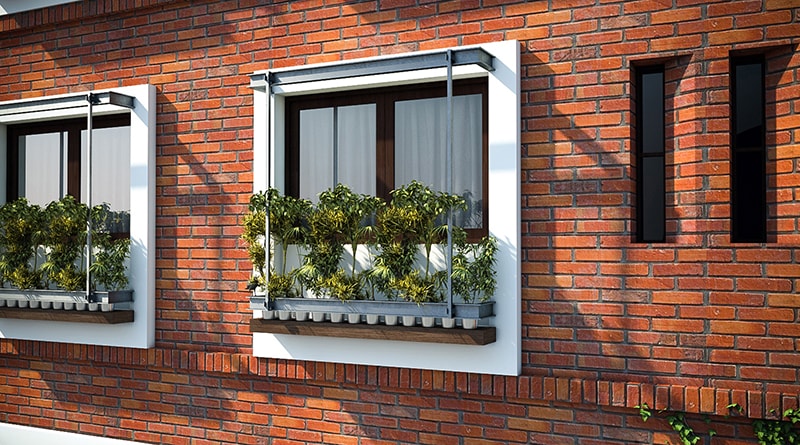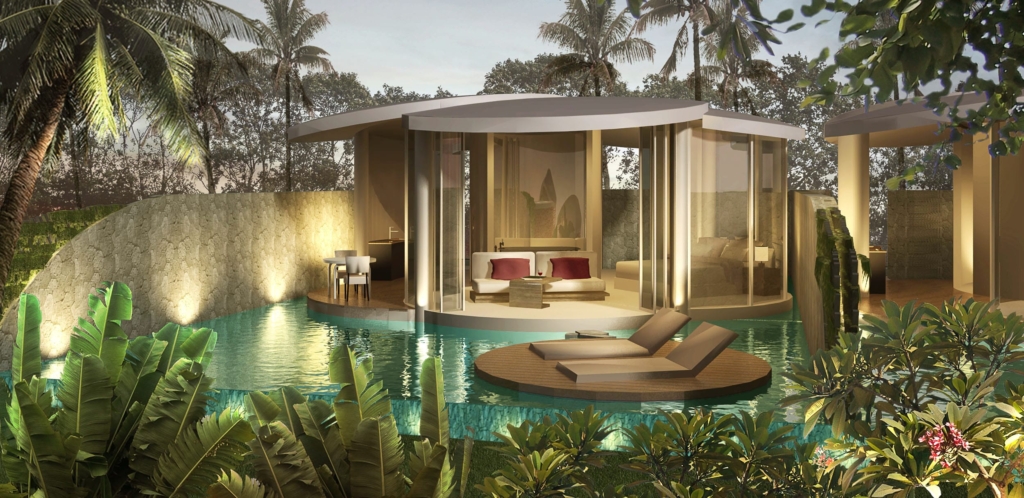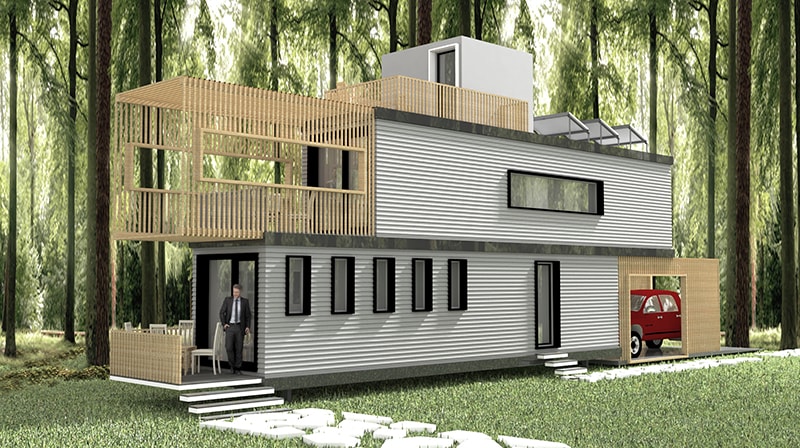If you’re like anyone in the modern era, you’ve probably heard about all of the benefits of solar energy. It’s not hard to see that the sun is frequently shining, and if you could harness that energy to lower your electric bills, it seems silly not to at least give it a try.
Many companies have recently experimented with better, diverse solar options that provide a new level of variety to sustainable manufacturing, and you can take advantage of these options to power your home or business.
Take a brief look at history and you’ll understand the rapid rate of change and development in solar power. The concept of using light to generate electricity was discovered as early as 1839, but it wasn’t until the 1940s that the first practical solar cell was invented and patented.
From there, solar panel drafting services have rapidly developed, and now you can buy portable solar panels to charge your phone on the go. Businesses have them mounted on their roofs, and they’re even providing power to the International Space Station as it orbits the planet.
Traditional solar panels, while they are fantastic for capturing solar energy and creating electricity, can be clunky and unaesthetic. This is problematic when trying to design a beautiful house or building because you don’t want to interrupt a well-designed structure with an unappealing addition to the rooftop.
Solar cells like this are also bulky, taking up a lot of space and seriously weighing down your roof – in some cases, roofs even need to be retrofitted to properly support the weight of a full solar panel system.
These drawbacks can impede homeowners from converting to solar energy, which would provide a wealth of opportunity for them and the electric grid at large.
Real estate analysis shows that traditional solar panels are only a selling feature for a home in the states of California and Arizona, even though they typically reduce monthly expenses by 20–30 percent.
So, how can we make a solar panel system design that you want to use and show off? Let’s look at several different options, some you may have heard of, but others that may be novel and give rise to some great new opportunities.
6 Solar Solutions to Make Your Home More Environmentally Friendly
1. Solar Shingles

Instead of traditional solar cells and panels, solar shingles have become quite the rage. There are numerous benefits to using an organization of shingles rather than singular solar panels.
First of all, they are widely customizable. The options for solar shingles look as diverse as every rooftop you can imagine – although I don’t think you’ll find ones to replicate thatched roofing in northern Europe.
Companies in California have created solar glass shingles that look like curved terracotta to replicate the old Spanish architecture of a home. When these are integrated into a home design, they look seamless, and many people will never tell the difference between these shingles and traditional ones.
Another benefit of these solar panel shingles is that they are a lot easier to take with you. Some roofing design companies will help you create a solar roof that’s easy to traverse.
And it’s becoming much more common than you think, as the roof begins to act as a money-saving device when you can use it to generate electricity. The prevalence of solar shingles is rising dramatically as they become more diverse and economical.
This is easily one of the most functionally and aesthetically appealing options to incorporate solar electric generation into your house design.
An additional way to incorporate solar shingles without having to replace an entire roof is to create a solar porch. Not only does it expand the living area of your house and provide a beautiful outdoor space, but it can be lined with solar shingles that blend flawlessly with the rest of your roof to create an integrated roofline that generates electricity for your house.
2. Solar Bricks and Windows

Another viable option for solar energy is solar bricks and windows. These options are even more impressive than traditional solar panels for a variety of reasons.
First, some background – solar bricks are translucent glass bricks that have solar cells embedded into or imprinted onto them. They collect solar energy through the traditional, photovoltaic method, but they also trap solar heat because they let light in but are thin and made of glass.
Because of this, the heat generates a small amount of extra energy, making them more productive, and the natural internal reflection of the glass means more light bounces around and back into the solar cells.
This all generates more electricity and makes them even more efficient than traditional solar panels. Additionally, they can be built directly into a new construction project and used as legitimate bricks.
Solar windows follow a similar principle. A solar window is more transparent than a solar brick because it functions as a legitimate window. This is the first of its advantages.
It can be designed into existing structures and is completely “invisible” to the naked eye. The only difference you may notice between a traditional window and a solar window is that it appears to be slightly tinted, and this is necessary because the tint is the solar energy collector.
Aside from that, it’s a perfectly normal window that you can open, close, and, most importantly, look through.
An added advantage to solar windows is that they don’t block all the light, so, aside from functioning as a standard window, it lets light into the room. This reduces electricity cost and allows sunlight to warm up the room. Doing these things makes it incredibly efficient.
It is estimated that solar windows and solar bricks can become up to 500% more effective than traditional solar panels, and what’s better is that they blend naturally into the structure. This is engineering design at its best.
3. Solar Hot Water Heaters

A solar-powered hot water heater may sound bizarre, especially since they are typically kept in some of the darkest areas of the house – the garage, the basement, etc.
But they are also one of the most energy-consuming items in your home. There are numerous designs, and you can make one yourself as a fun backyard project, but it’s not the sleekest if you make it like that.
A solar water heater has a solar energy collector, either in the form of a photovoltaic cell or in the form of mirrors and lenses to direct light into a clear tank, and it has a water reservoir. If it uses a photovoltaic cell, it turns the light into electricity and uses that electricity to heat the tank.
If it’s cruder, it will direct the sunlight into the reservoir that is made of glass or another light-permeable material and will directly heat the water.
They can be complex, with multiple pumping systems to run hot water past incoming cold water and ensure the highest efficiency, or it can be much more rudimentary, simply heating the water directly without pumps as the water comes in.
Whatever option you choose for it, a solar version can make your water heater up to 30% more efficient, which translates into great financial savings and a lower carbon footprint.
The bonus is that the solar collectors are relatively small since you aren’t trying to power an entire house with the energy. The unit itself will be hidden away in some dark corner of your home, so its aesthetics will not take a toll on the rest of the design, and your house will still look as chic as ever while being more environmentally conscious.
4. Outdoor Solar Lights

I would guess that you or a neighbor already have some of these at your house. These are one of the simplest and cheapest ways to incorporate solar power into your home, project, or building of any type.
Outdoor solar lights are cheap and easy to install – in fact, the typical installation just requires pushing them into some soft soil or mounting them onto a fence. While it won’t contribute as significantly as installing an entire roof of solar panels or replacing a water heater, it can have valuable benefits.
These outdoor solar lights are great for lighting walkways and garden areas. They won’t illuminate the inside of your house, but they will prevent you from needing to turn on lights outside that will use electricity, which is great if you’re letting your dog out, having a nighttime party on your patio, or is just going out to look at the stars.
There is one additional benefit that may get overlooked when it comes to outdoor solar lights. Because of their low cost and easy installation, many people choose to install them, and they’re a great introductory foray into the world of solar energy.
They also provide security. In a time when every house has a remotely monitored video surveillance system, and break-ins cause endless stress, having exterior lighting is almost a necessity.
Many people balk at the idea of leaving regular floodlights on throughout the night because it wastes electricity and drives up their bill, but using an array of small solar lights can canvas the entire property and ensure that everything is visible throughout the night. This deters security threats and is extremely economical.
5. Solar Attic Fans

Raise your hand if you’ve ever had an attic fan. Now, if you’re currently standing underneath that attic fan and it’s on, take a minute to forcefully pull your hand down, because that fan is strongly vacuuming it up into the ceiling. An attic fan is an incredibly efficient way to cool a home.
They void the hot air from an attic and push it outside using, you guessed it, a very powerful fan. This draws all the air in the home up and out, bringing in a strong breeze and pulling up cooler air from low down to circulate through the house. And, it uses a fraction of the electricity that is required for an air conditioning unit.
Did you know you can get a solar attic fan? Using the energy generated by the sun’s rays, you can power an attic fan, and it’s much less expensive and cumbersome than powering your entire air conditioning system because so much less energy is required.
A solar attic fan has numerous advantages, the first being that you can get the entire system for only a couple hundred dollars.
These fans typically use about 10% of the energy used by anything made by a traditional HVAC design service, and while it may not get your home to feel like the Arctic tundra, it can chill a house significantly in just an hour or so. Additionally, since it removes heat from the house, it helps to preserve the integrity of the attic and roof. Too much heat built-up in the attic can slowly degrade the insulation and roofing, and an attic fan will mitigate that to an extent.
The best thing about a solar attic fan though? They are small and simple to install yourself. The overall footprint on the roof is pretty much a two-foot diameter circle with a small array of solar panels that are already integrated into the fan.
This simplistic design maximizes the energy generated by the solar panel to keep your costs as low as possible. You could effectively reduce your HVAC electric footprint to nothing by incorporating a few solar panels for the air conditioning unit and a solar attic fan to aid in cooling the house.
6. Creative Solar Solutions

Let’s get creative. How did people in Roman times use solar energy? What, did you think solar energy was a new concept? People have been creatively using solar power for countless millennia; it’s only recently that we’ve taken to electrifying the process.
Since heating and air conditioning are the costliest electricity consumers in a typical household, unless you’re mining Bitcoins or running a server room in your closet, creative solar energy solutions typically focus on those aspects.
One of the ways to creatively use solar energy is in passive solar capturing solutions. Using a wall of plain windows can allow a great deal of sunlight in, which warms a room. To improve on this concept, designers will incorporate dark color palettes in that room to capture and trap the heat from the sun, releasing it slowly throughout the day and night to keep the room warm and at a steady temperature.
You can also incorporate other materials that will keep heat in better, such as concrete floors, or reflective surfaces to distribute light and warmth throughout a room. By using these methods, you can provide heat and light in a room without expending any energy.
An architectural designer can plan the spaces so that light is shining in the rooms at peak times, such as by facing a room to the east for morning sunlight, or the south to maximize daylight energy and trap it for the nighttime.
There are plenty of creative solutions to passively capture this energy. Some low-income countries have developed entire air conditioning systems that use absolutely no electricity but are simply run through passive solar energy capture.
This may be a bit more rudimentary than most people in America are looking for, but you can use clay funnels doused in water to accelerate and cool wind using evaporative cooling to provide a refreshing cross-breeze in your house. No electricity required, but you lower the temperature of a room by ten or more degrees and incorporate a breeze.
For a more high-tech solution, you can incorporate minimalist, discreet solar panels on interior surfaces that are exposed to sunlight. You can power small devices or incorporate them into your house system and generate extra electricity for the entire building. Combined with the passive solar energy collection of a nice bank of windows, you can drastically cut your electrical expenditure overall.
There are, clearly, a vast number of options to reduce the electrical grid impact of your home or building. Incorporating these ideas into your home can drastically improve your electrical savings and keep you from draining the electrical grid. As the grid ages and the population increases, independent energy collection and smaller impact homes will be a necessity to keep things functioning like normal.
One of the best things you can do when constructing a building to reduce its impact is to plan. It is always cheaper and more efficient to build solar panels into a structure than to incorporate them at a later date.
The same goes for solar windows or passive solar harvesting systems. If you design a house, you can use things like walls of windows or heat-trapping materials like concrete both as energy-saving measures and design aspects.
Cad Crowd’s Freelance Designers Can Help
It’s always best to consult with a qualified architect or CAD designer to properly plan out your construction, especially if you’re attempting to incorporate detailed and sensitive aspects like solar energy harvesting.
Cad Crowd offers a wide variety of services and contractors with whom you can work to get your project planned out properly.
Make sure your home is facing the right direction for solar collection. Make sure your roof can handle the load of solar panels, or your attic can handle a solar attic fan. Whatever you do, make sure you plan appropriately.
Using skilled services from Cad Crowd, you can make sure your architectural plan is complete. They can provide you with thorough 3D architectural rendering services that will not only demonstrate how the design will look like but also how sustainable it is for the structure.
The better your design, the more you will be able to save costs by using these exquisite solar harvesting design ideas. Your wallet and the electrical grid will thank you over and over for your contribution. If you do it well enough, the electrical company may even pay you for the energy you produce.
Jumpstart your next solar project today with a free quote!
